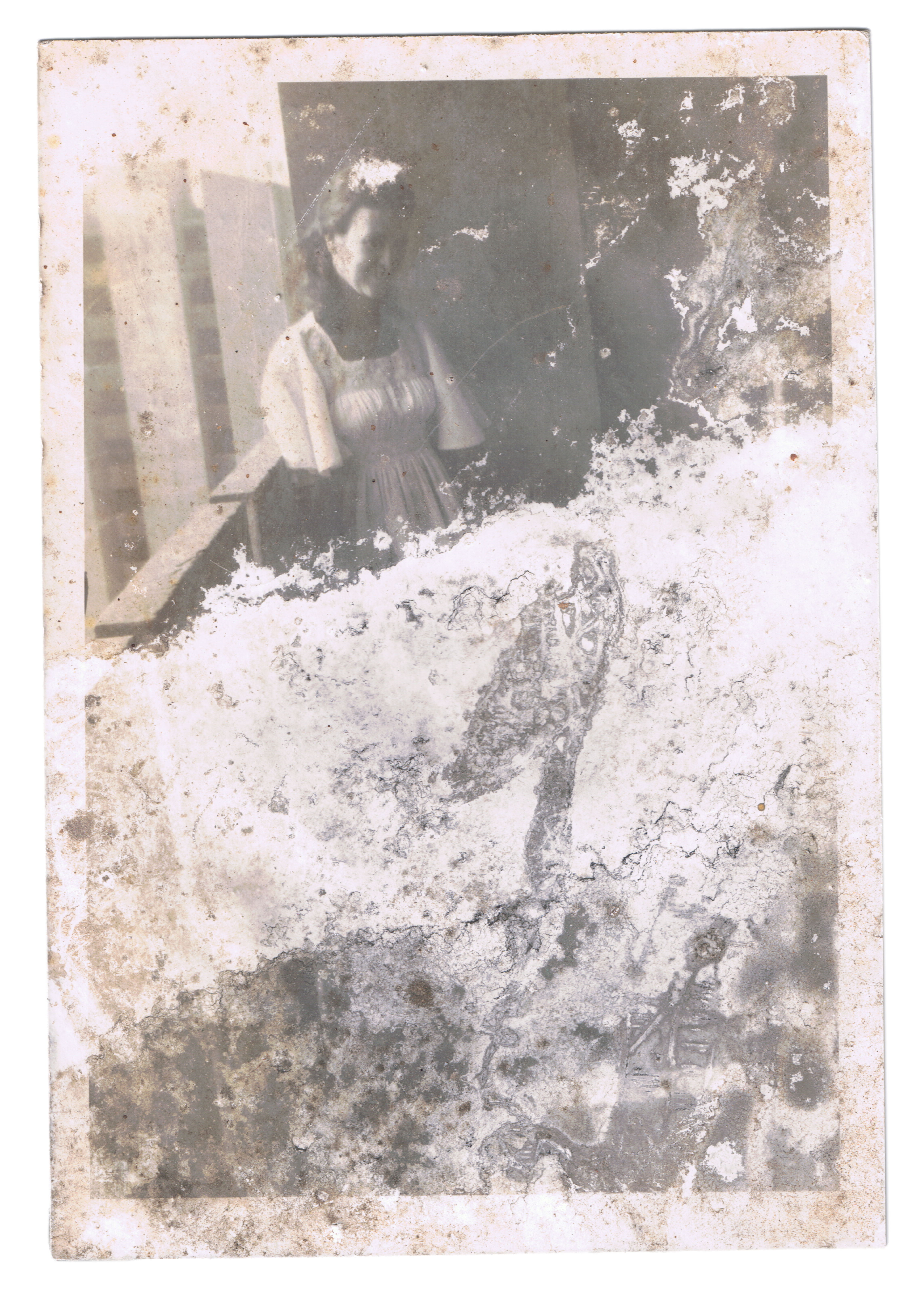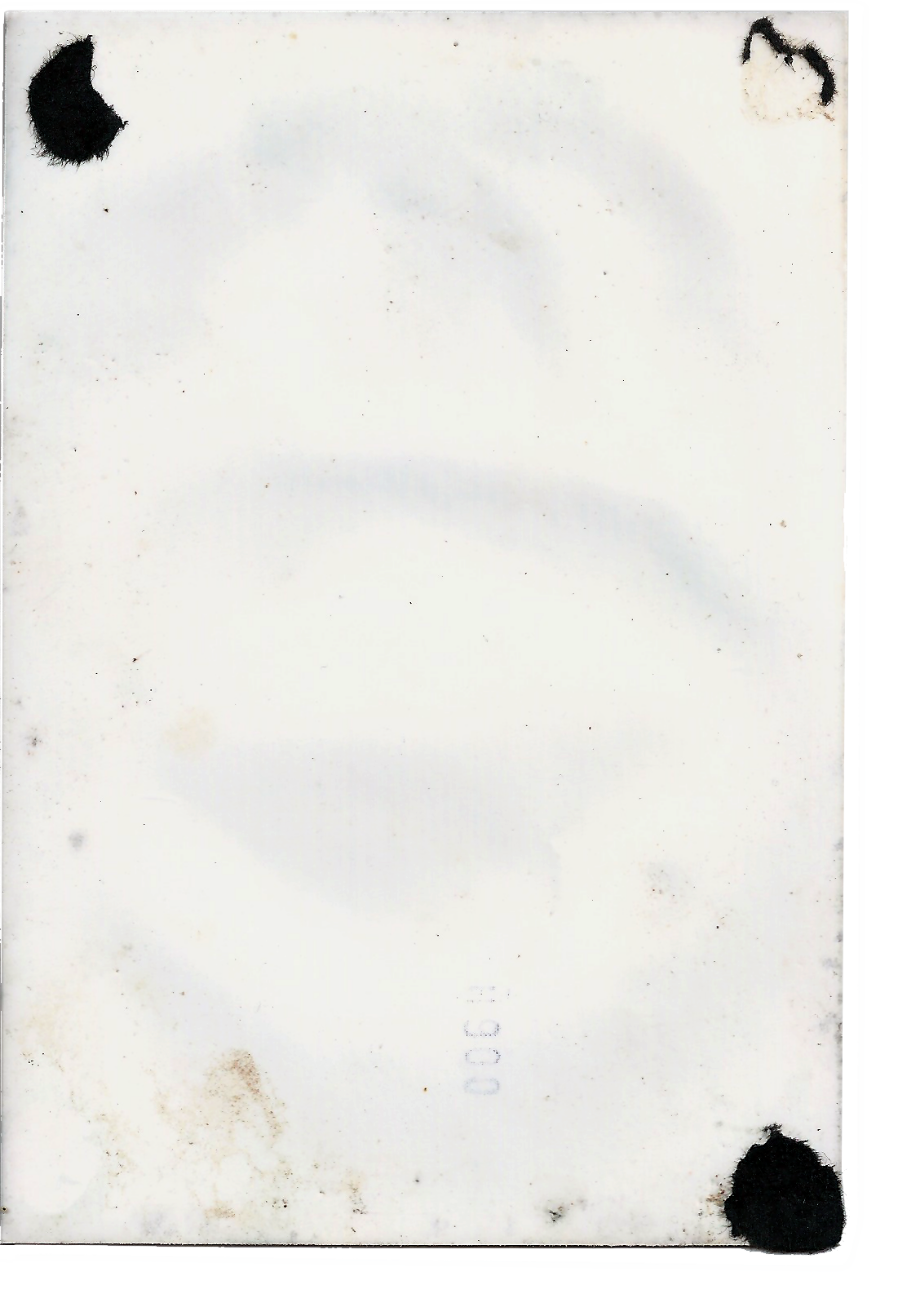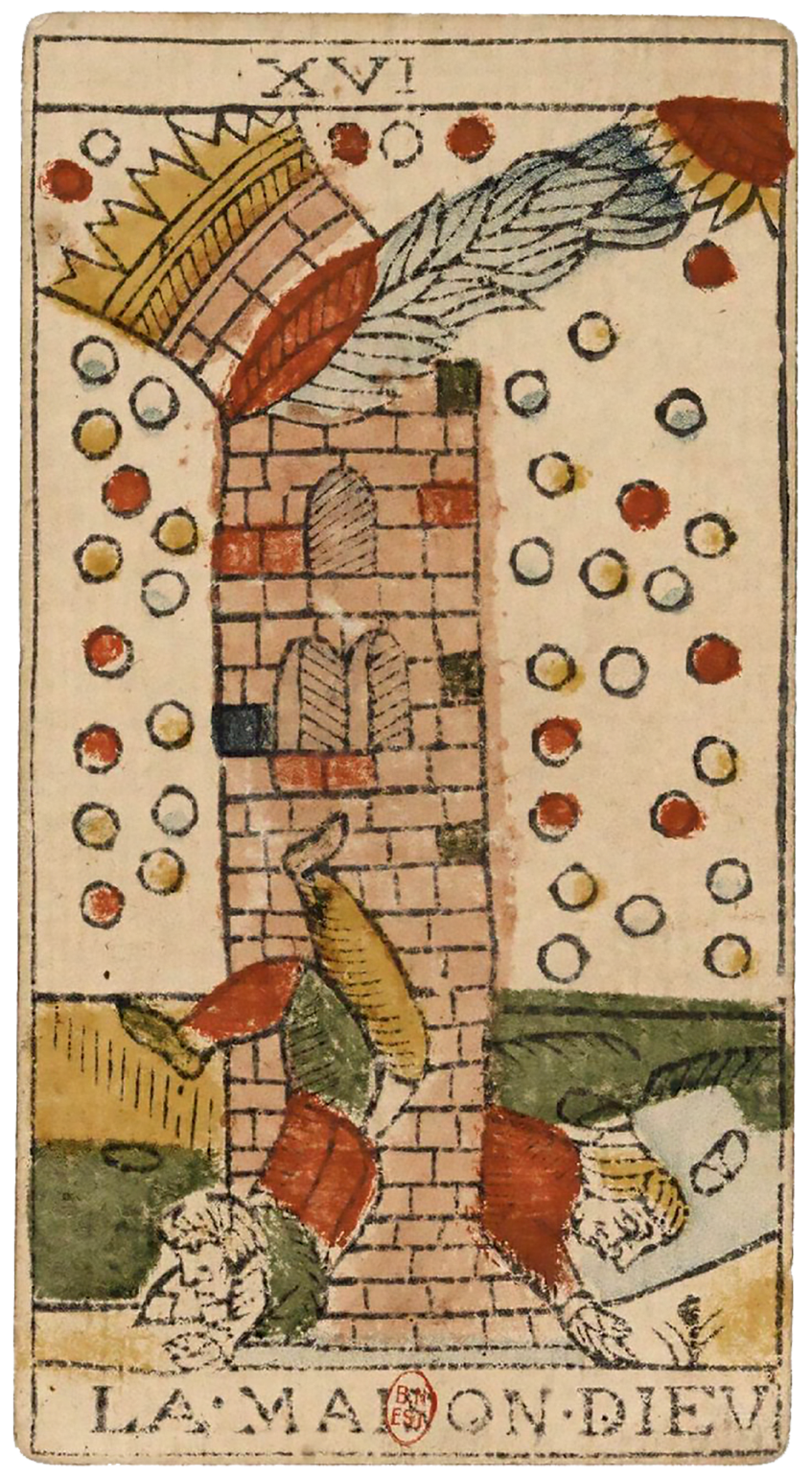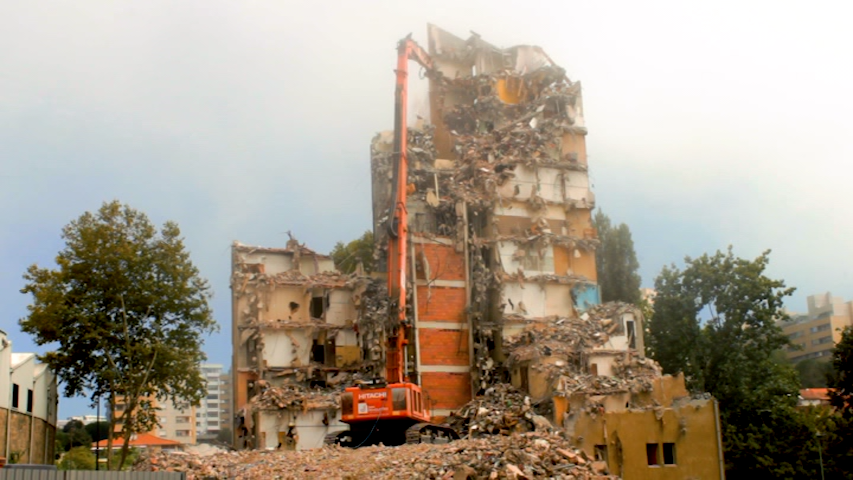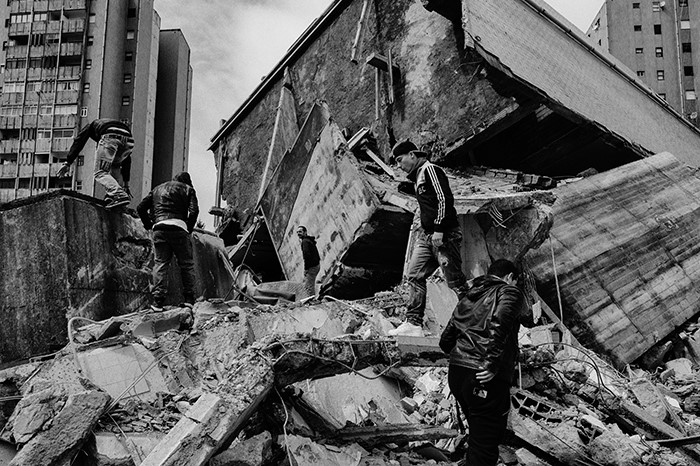Services on Demand
Journal
Article
Indicators
-
 Cited by SciELO
Cited by SciELO -
 Access statistics
Access statistics
Related links
-
 Similars in
SciELO
Similars in
SciELO
Share
Vista. Revista de Cultura Visual
On-line version ISSN 2184-1284
Vista no.13 Braga June 2024 Epub June 30, 2024
https://doi.org/10.21814/vista.5257
Thematic Articles
What Endures in the Rubble-Image?
1Instituto de História da Arte, Faculdade de Ciências Sociais e Humanas, Universidade NOVA de Lisboa, Lisboa, Portugal
Quando uma edificação é demolida, a sua estrutura, unitária e planeada, é desintegrada em incontáveis fragmentos. Heterogéneos e desordenados, estes fragmentos borram os limites entre o que era privado - o espaço doméstico - e o que é público - o terreno antes ocupado. Em 2019, encontrei uma fotografia familiar entre os escombros da demolição das últimas torres do Bairro do Aleixo, no Porto. Este foi um conjunto de habitação pública construído na década de 1970 para realojar famílias da Ribeira-Barredo, deslocadas por uma reabilitação urbana. Ao longo do tempo, as cinco torres abrigaram uma população numerosa e mutável que se apropriou desse modelo de habitação até então incomum. Entre 2011 e 2019, o Aleixo foi alvo de três operações de demolição, politicamente justificadas por sua degradação estrutural e social. As duas primeiras foram implosões espetaculares e televisionadas, enquanto a última, que presenciei, foi uma lenta desconstrução que durou meses. Na fotografia, uma mulher vestida de branco posa numa varanda da Torre 1 do antigo Bairro do Aleixo. Ao fundo, paira o esqueleto fálico da Torre 4, implodida décadas depois. Quando encontrada, a fotografia, arruinada pelo tempo e pelas circunstâncias, sugeria uma afinidade conceptual com os escombros que a cercavam. Neste artigo, detenho-me sobre essa fotografia encontrada, objetivando desvelar os processos e as tensões armazenadas nesse fragmento. Recorro às relações ontológicas entre fotografia e morte, também entre fotografia e ruína, para analisar a imagem espectral desse sítio obliterado. Desenvolvo o que o encontro com ela pode indicar sobre a memória do bairro, a sua imagem pública, assim como o longo e violento processo de remoção dos seus moradores. Chego à noção de “imagem-escombro” como chave de leitura para esse vestígio quase desaparecido que afirma teimosamente a persistência de um lugar dissidente e complexo, pretensamente apagado do espaço público e suprimido da memória urbana pelas sensibilidades dominantes.
Palavras-chave: demolição urbana; fragmento; fotografia encontrada; representação pública; ruína
When a building is demolished, its cohesive and planned structure fractures into countless fragments. These heterogeneous and disorganised fragments blur the boundaries between what was once private - the domestic space - and what is now public - the formerly occupied land. In 2019, I stumbled upon a family photograph amidst the rubble left by the demolition of the last towers of the Bairro do Aleixo in Porto. Constructed in the 1970s, this was a public housing estate designed to accommodate families from Ribeira-Barredo who had been displaced due to urban redevelopment. Throughout the years, the five towers have hosted a sizable and fluctuating population that has adapted and made use of this previously unconventional housing model. From 2011 to 2019, Aleixo underwent three demolition operations, politically supported by arguments citing its structural and social deterioration as justification. The first two were striking implosions broadcasted on television, whereas the final demolition, which I witnessed, unfolded as a slow deconstruction spanning several months. In the photograph, the woman dressed in white poses on a balcony of Tower 1 within the old Bairro do Aleixo. In the background stands the phallic skeleton of Tower 4, which would be imploded decades later. Upon its unearthing, the photograph, weathered by time and circumstance, hinted at a conceptual connection with the debris surrounding it. In this article, my focus centres on this found photograph, aiming to unveil the processes and tensions encapsulated within this fragment. I draw on the ontological connections between photography and death, as well as between photography and ruin, to analyse the spectral image of this obliterated site. I delve into what the encounter with this image might reveal about the memory of the neighbourhood, its public image, and the extensive and violent process of displacing its residents. I reach the concept of a "rubble-image" as pivotal in interpreting this nearly vanished imprint that stubbornly affirms the persistence of a dissenting and complex place, supposedly erased from public space and suppressed from urban memory by dominant sensibilities.
Keywords: urban demolition; fragment; found photograph; public representation; ruin
1. The De-Construction of the Place
The high-rise solution adopted responds to an economic concern of land efficiency and offers living conditions closely resembling those desired by its future residents. Care has been taken to reinforce this aspect through the meticulous design of the galleries, staircases and elevators. However, it has to be said, at a certain expense to the project's overall cost. (Câmara Municipal do Porto, 1969, p. 2)
The inception of Bairro do Aleixo, located in Porto, is associated with an urban regeneration study conducted towards the late 1960s focusing on the city's historic centre. Although particularly sensitive to the permanence of the local population, the "Estudo de Renovação Urbana do Barredo" (Barredo Urban Regeneration Study), coordinated by the architect Fernando Távora1, envisioned the displacement of approximately 40% of the residents in the intervention area as a means to address escalating issues of degradation, precariousness and overcrowding (Queirós, 2019). In order to accommodate the families facing eviction from Ribeira-Barredo, an area of hillsides nestled between the Cathedral and the Douro river near the D. Luís bridge, the study suggested the need to build new public housing complexes in close proximity to the original area or strategically located in the city's expansion zones (Távora, 2019). The blueprint for the Aleixo Affordable Housing Group2 began taking shape during the ongoing study supervised by Távora with the explicit aim of supporting its development. Bairro do Aleixo was conceived on an approximately 3 ha terrain nestled within the civil parish of Lordelo do Ouro - a site which, at the time, was on the urban periphery despite being less than 4 km from the historic centre. The complex stood out from what had been done so far in terms of public housing in the city and possibly in the country3. It consisted of five 13-storey towers interconnected by paths and streets, which, according to the original plan, were to be supported by complementary infrastructures such as a primary school, a social centre and small shops for commercial use (Câmara Municipal do Porto, 1969). As outlined in the descriptive memory of the project, the relative proximity to the downtown area was intended to benefit the population to be relocated, originally from the riverside and mostly employed in trades related to port activities and the river-based economy (Câmara Municipal do Porto, 1969). Additionally, during the mid-1970s, the civil parish of Lordelo do Ouro stood as one of the city's primary industrial hubs, offering employability prospects for the population in question, essentially blue-collar workers (Queirós, 2019).
The neighbourhood encompassed 320 dwellings, accommodating approximately 1,400 people (Queirós, 2019). Initially, the families relocated from Barredo were housed in the tall towers in improved living conditions, but in a housing and neighbourhood model that was very different from what they were used to. However, over time, these residents appropriated the space, using the staircases, galleries, and the central area to create small gardens, socialising and communal areas. They essentially transposed some of the horizontal space usage logic they were familiar with into the new high-rise arrangement, which "contributed to the creation of a neighbourly camaraderie uncommon in collective housing buildings" (Pestana & Moreira, 2014, para. 5).
Despite its inception as an exemplary project, initially associated with a famous study devised by a renowned architect, several political and economic hurdles stood between the plan and its materialisation. The comprehensive execution of the complementary facilities, for example, was jeopardised from an early stage by political and economic obstacles. The construction of Aleixo unfolded as a protracted and troubled endeavour, commencing on the brink of April 1974, characterised by financial constraints, delays, and construction complications. Disputes and missteps among the governing entities marred the process of relocating residents and allocating housing. This discord reached a climax in 1975 when a group, including Barredo residents concerned about losing their right to relocation, clandestinely occupied one of the towers (Pinto, 2019b; Queirós, 2019).
In the early 1980s, a negative public perception of Aleixo and its residents began to circulate within the city, particularly in the neighbouring areas and within the neighbourhood itself (Queirós, 2019). This stigma partly stemmed from preexisting biases against the rehoused population, originating from the lower classes and previously residing in Ribeira. They were deemed "unfit" to inhabit the "innovative" towers. This perception of "physical deterioration" and "symbolic devaluation" intensified toward the late 1980s, notably with the fall of industrialisation, which exacerbated severe unemployment and economic vulnerability4 for a significant portion of the residents (Queirós, 2019, p. 58).
This complex combination of factors fostered an environment conducive to the emergence of an underground economy centred on drug consumption and trafficking. Obviously, the establishment of this drug-related economic and social circuit was not restricted to the site; rather, it burgeoned into a broader social and public health concern extending throughout the entire city, particularly gaining significance in the mid-80s.
The physical demolition of a house follows a prior disintegration in the imagination. Its structural dismantling is foreshadowed by the erosion of its sanctity as a haven and its entitlement to occupy the land on which it stands. The machinery of destruction is fuelled by political and media pressure granting authorisation to the process. Hence, the tools of demolition encompass "documents, surveys, identity cards, forms, hammers, bulldozers, excavators, wrecking balls, and occasionally bombs and artillery shells" (Raqs Media Collective, 2011, para. 2), but also the camera, the pen and the decree. In the Aleixo case, the municipality's neglect in upholding its obligations to maintain the neighbourhood and establish sustained social support has significantly contributed to its vulnerability and degradation. The public stigmatisation of the neighbourhood and its residents, amplified by the exhaustive media narratives and governmental representation, became the primary mechanism for endorsing its phased demolition starting in the early 2000s. Arguments regarding physical, social, and moral decline were coupled with theories questioning the suitability of high-rise construction for housing these populations. Media and political rhetoric aimed to create a consensus around the necessity of a purely spatial solution to the complex socio-economic issues plaguing the neighbourhood. According to this hygienist conception, Aleixo was portrayed as a dangerous and irredeemable territory5, jeopardising the safety of the entire city. As per this perspective, the most logical solution was to wipe it off the map once and for all.
Indeed, alongside social concerns, more economically pragmatic factors also played a role in deeming the destruction of Aleixo an inevitable operation for the city's governing bodies. As the urban landscape expanded and the surrounding areas underwent transformation, the value of the land surged, making the towers seem out of place. Displaced in the landscape, the Aleixo sat on a plot of land on a hillside overlooking the Douro river. This location became politically and financially strategic, especially in the context of a burgeoning tourist-centric city aiming for cosmopolitan allure on an international scale. The debate about the demolition of the Bairro do Aleixo was protracted, contested, and became a focal point in three consecutive Porto mayoral election campaigns (2001, 2005, and 2009). While the decision to demolish the complex was officially announced in 2008, the operation was only concluded 11 years later.
2. Photography Among Other Fragments
The bulldozer has become one of the main machines of spatial destruction under globalised capitalism: a heavy solid, high-powered mass of steel that crushes objects in order to transform their form and smooth out space. (Gordillo, 2014, p. 263)
In 2011, Tower 5 was brought down in a spectacular implosion event with strong symbolic overtones6, broadcast live on television channels. In 2013, when Tower 4 was demolished, there was much less media coverage, as the debate had subsided and the neighbourhood had only half as many inhabitants (457 residents) as at the start of the process in 2011 (Queirós, 2019). Six years later, in 2019, the three remaining towers were "dismantled" (and not imploded) through a slow and lengthy process of civil de-construction of the building7.
In August of that same year, I decided to film the demolition of Tower 2. When I arrived, Tower 1 had already been demolished, and the portion of land opened up by the operation was partially cleared, free of most of the rubble. Although I was aware of the neighbourhood's impending obliteration and the public debate surrounding the process and the land management, I had not realised the demolition was underway until I heard machinery while passing the riverside, drawing my attention to Lordelo do Ouro's top where a building was being dismantled. My focus then was on the continuous cycles of demolition and construction shaping the city and the voids (material and symbolic) these operations created. Voids that, despite their apparent nullity or banality, are like spatial archives intensely filled with tensions and memories.
Unlike the dramatic demolitions of the first two towers, this one was far less spectacular. Aside from myself (and my camera), only two or three curious bystanders leaned against walls or made impromptu seats on the pavement to witness the slow work of the machine, this time barely broadcast on television. These occasional spectators engaged in conversations about the neighbourhood, reminiscing about what it had been like in the past. Then, as was to be expected, the conversation veered toward the drug problem and how the towers' demolition did not solve it (a viewpoint echoed by the municipality and reinforced by the media). Instead, it seemed to have scattered the issue to different public housing complexes within the city.
The implosions of the initial towers were fleeting, lasting mere seconds, but the dismantling of the final ones extended over approximately six months. Each return to the site revealed Tower 2 decomposed in a different configuration from the day before, while Tower 3, emptied but still standing, awaited the same fate. The repetitive movements of the mechanical arm manoeuvred iron tongs that gnawed at the building as though it were made of paper. It tore the walls apart one by one, exposing glimpses of rooms containing remnants of former residents' furniture alongside fragments of tiles and wallpaper. The scene was so brutal that it felt almost indecent. The mountain of rubble resulting from the "dismantling" piled up around the skeletal remains of the old building and mixed with the remnants of Tower 1, which had been demolished earlier. When it was possible to navigate the obstacles, I approached to examine the pile of rubble. Amidst the misshapen blocks of cement and concrete, among shards of glass and ceramics, a photograph caught my attention.
I grappled with what to do with the video recordings I captured during the demolition. Playing them back felt like a symbolic reproduction of the destruction, potentially sublimating its violence. However, the photograph I brought home held something I am only now beginning to explore. When I found it, its delicate and luminous materiality stood out among the (de)constructed fragments. A rectangle of paper of approximately 12.5 cm x 8.5 cm. It seamlessly blended in with the pieces of that building and some other objects (a plastic piece of a toy, wooden cupboard doors, some rags, a pair of worn-out shoes) as yet another trace that imprinted what life was like there. Those mundane and fragmented objects were the documents of a kind of disorganised archive of the neighbourhood. Through a sequence of coincidences, which also involved my presence in that situation, the photograph met a different fate than the other rubble, which, according to the excavator's driver, was being collected and sorted for reuse in various construction works. How many other anonymous images and objects remained buried in the mountain of rubble?
3. The Woman and the Tower
The thing is never just an object, but a fossil in which a constellation of forces are petrified. (Steyerl, 2010, as cited in Gordillo, 2014, p. 259)
A woman poses for a photograph on the balcony of a flat suspended from one of the top floors of one of the towers in the old Bairro do Aleixo (Figure 1 and Figure 2). Half of another tower can be seen in the background. The woman is captured at a diagonal angle by the photographer, appearing to smile in a way that we cannot see but is suggested by the wrinkles on her chin. Her hair is styled in a low ponytail, cascading over her right shoulder, and there is a white glow atop her head. Her eyes remain unseen, resembling two black holes like permanently open shutters.
The gloom inside the flat veils the front of her face, while the outside light illuminates the right side. She is wearing a white summer dress of light translucent fabric and flowing sleeves. Her arms remain concealed, maybe crossed behind her body, seemingly shy and hidden from the camera's view. We might consider that each photograph embodies a kind of ruin, carrying remnants of what was left behind into the present. In this one, however, the ruin seems integral to the very constitution of the image. Brown spots resembling grains of earth dot the print's surface. Its lower half, faded and corroded, remains a mystery. It has been invaded by an oxidised crust that can be attributed to time but also to the period it spent among the rubble, possibly exposed to rain and humidity. It is not possible to know what lies beneath this layer, just as it is not (yet) possible to say anything about the woman's identity. In any case, her attitude - her gaze fixed on the photographer, her crossed arms - suggests she is the only person captured in the image.
Still, the woman is not the only ghost in the image. The balcony where the moment was captured was probably located in Tower 1, the building whose demolition had just been completed when I found the photograph (Figure 3). Tower 4, which was imploded in 2013, occupies a third of its upper background. From this balcony, you could probably also see the Douro river, but when framing the scene, the photographer chose not to ignore the massive presence of the building in the landscape. The woman's figure and the tower, side by side, share equal space in the composition.
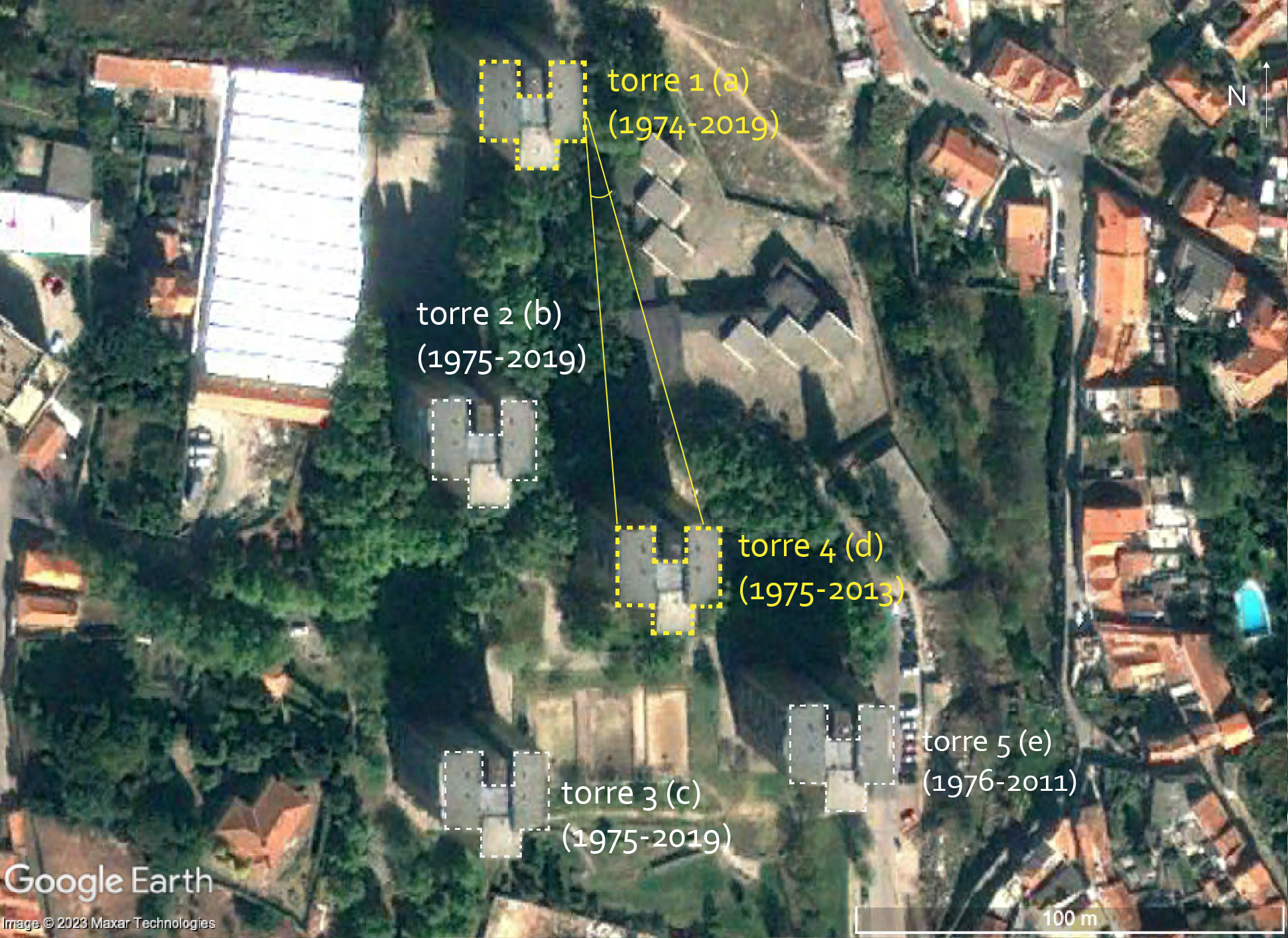
©2023 Maxar Technologies (Google)
Figure 3 Outline illustrating the layout of the towers in the old Bairro do Aleixo and the probable angle from which the photograph in question was captured. Prepared by the author from a satellite image, 2023
The choice to construct tall buildings is often driven by economic considerations related to urban land and property markets. Nevertheless, the symbolism of verticality, often linked to power and typically associated with men, is a prevalent cultural decision (Bondi, 1992). According to Hayden (1977), the skyscraper is an addition "to the procession of phallic monuments in history - including poles, obelisks, spires, columns, and watchtowers" (para. 15). The analogies between buildings and anatomies, rooted in an essentialist, biological, and dualistic interpretation of gender, persist in reinforcing sexist stereotypes entrenched in the collective imagination. In the case of Aleixo, it is crucial to note that the towers were the embodiment of a singular architectural vision by a (male) designer shaping the landscape. In the photograph, the tower's phallic skeleton eerily looms behind the woman's body. A stark reminder of its inadequacy ingrained within our urban landscapes, given that "our cities are patriarchy written in stone, brick, glass and concrete" (Darke, 1996, as cited in Kern, 2010, p. 31). The projection of the sturdy, upright form contrasts with the protection of the alluring, domestic nook, a domain culturally linked to the female gender, precisely where the woman in the photograph is positioned.
Aside from the fact that each photograph encapsulates a singular event, only partially reproducible as an image, this moment could never be recreated. Decades after the camera captured the scene, the Riotronic DT console, "used for detonating tunnels, quarries, or buildings" (Pestana & Moreira, 2014, para. 1), obliterated Tower 1. Consequently, the elevated viewpoint enabling the photographer's perspective and the woman's pose, nor Tower 4, the second figure in the depiction, no longer exist.
In A Câmara Clara: Nota Sobre a Fotografia (Camera Lucida: Reflections on Photography), a poignant essay Barthes (1980/1984) penned after his mother's passing (and, ironically, one of his final works), he suggests that all photography triggers "a rather terrible thing" - the "return of the dead" (p. 20). That is how Barthes encapsulates a paradox within photography. While the camera shutter operates a kind of micro-death of the subject8, turning it into a fixed object of representation, this mortifying capture is what prolongs its existence in time beyond its inevitable end. By referring to an instant that has already elapsed and cannot be recovered, the photograph embodies a superimposition of reality and the past. It stands as evidence of "a real thing [that] happened to be motionless in front of the eye" of the photographer (and the camera) at the moment of the shot (Barthes, 1980/1984, p. 116).
It is plausible to suggest that the photograph, still in black and white and rather worn, might have been taken in the early years of the neighbourhood, which was first inhabited around the time preceding April 25, 1974. Tower 1, where the woman is situated, likely witnessed its initial occupancy between late 1974 and early 1975 by the first residents displaced from Ribeira-Barredo. During this period, the complex comprised only the first two towers, with one still under construction (Queirós, 2019). At the time, disagreements among the authorities responsible for allocating the initial residences intensified, fuelling the population's urgency to secure housing. Fearing sudden changes in housing distribution or an unauthorised occupation by individuals outside the historic centre, a group of Ribeira-Barredo residents broke into Tower 2 during the early hours of December 13, 1975, when it had not yet been completed (Queirós, 2019). Once these initial challenges had been solved, Tower 4, visible in the background of the image, was only occupied approximately a year later, between late 1975 and early 1976. Following an inauguration ceremony and the handing over of keys, it began housing residents from Barredo who previously resided in the "pilot blocks" outlined in the Távora study (Queirós, 2019).
At the time of the camera shot, the place was not yet the same "Aleixo" that would later be associated with marginalisation and demonised by public opinion. It was still a collection of newly-built towers amidst many mishaps, as mentioned, but also a sense of anticipation. These towers symbolised an "isolated and pioneering experience in the city of Porto due to their construction's height, their location overlooking the river and the proposed auxiliary amenities they were meant to provide" (Lima, 2012, para. 1). It was maybe within this social and political framework that the tall (and, at the time, new and modern) towers served as both the backdrop and central elements in the photograph. It is conceivable that the woman was posing for the photographer on the balcony of the house to which she recently moved. However, the mundane nature of the scene captured in the image gains deeper significance when viewed in light of the events that unfolded three decades later. Beyond the mechanical death triggered by the photographic device and the sense of mortality it lends to the woman's face, there is the realisation of the physical "death" of the place.
In their definition of "demolition", the trio Raqs Media Collective (2011) emphasises that it means more than simply dismantling a built structure. It represents the abrupt dissolution of a life's work, the destruction of affinities, stories, a way of life, sharing and dreaming. Besides its traumatic impact on the space's occupants, the violent action of demolition creates a trap both for memory and gaze. The void left by the destruction imposes itself violently, almost denying any prior existence (Figure 4). The sudden disappearance of a place meant to endure can cause a kind of madness. Suddenly, all the life that once thrived there seemed like mere fiction. "To be able to be suspicious of what we see, we must know more, see in spite of everything. Despite the destruction, the suppression of all things" (Didi-Huberman, 2011/2017, p. 61). Against the threat of amnesia, we must declare: here, where apparently there is nothing, there was something. The surviving image, salvaged from the rubble, reminds us that "no space vanishes utterly, leaving no trace" (Lefebvre, 1991, p. 164). As a proof of reality and the past, the photograph in question contradicts the controversial removal of the towers from the landscape by undoubtedly attesting to their existence within the city's time and space. It resists the attempt of the State to erase them and stubbornly affirms the persistence of the traces, spectres, and memories that currently hover over the void left by the neighbourhood's demolition (Figure 5).
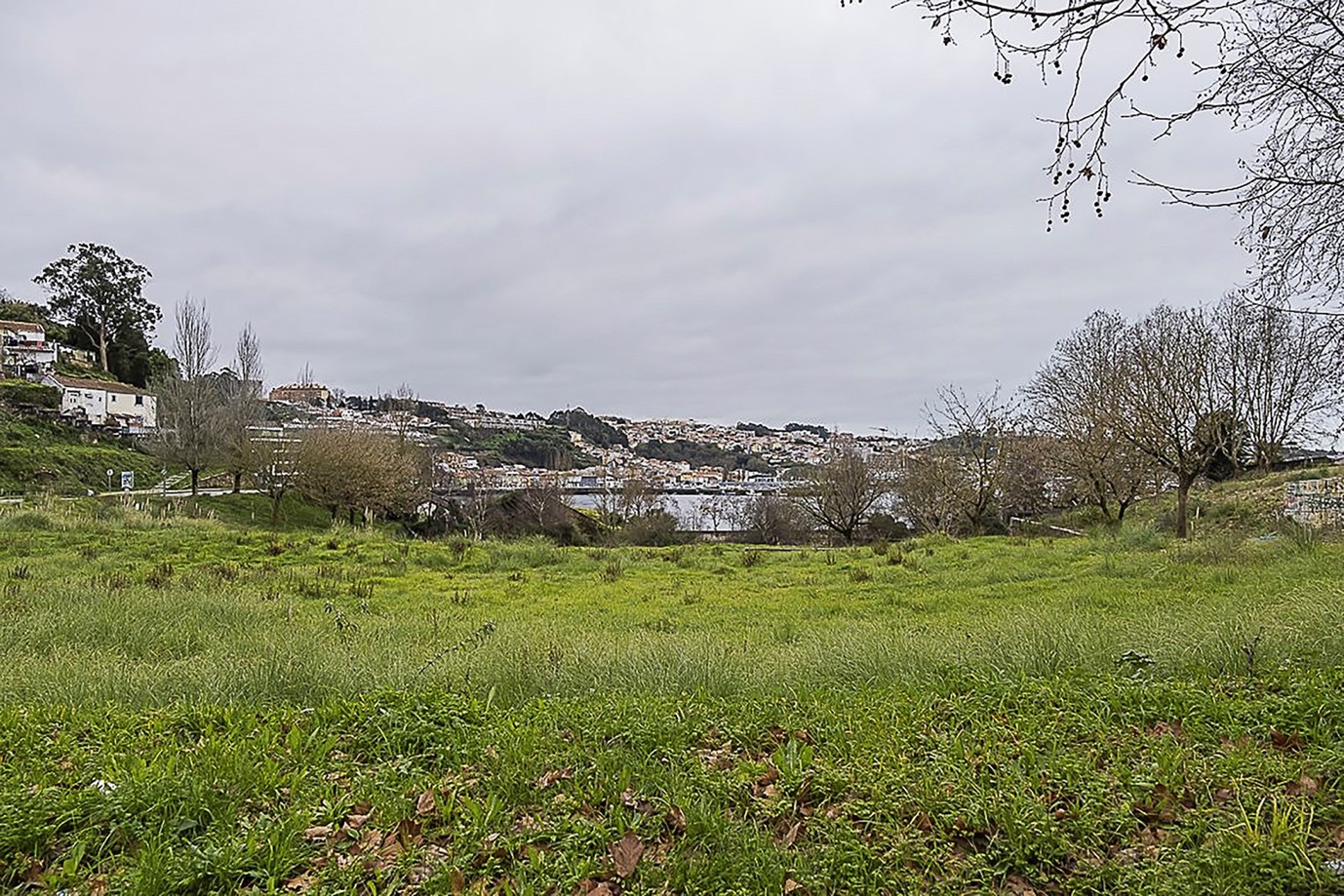
Filipa Brito/CM (archive)
Figure 4 The location where the former Bairro do Aleixo once stood after the complex was demolished, 2022
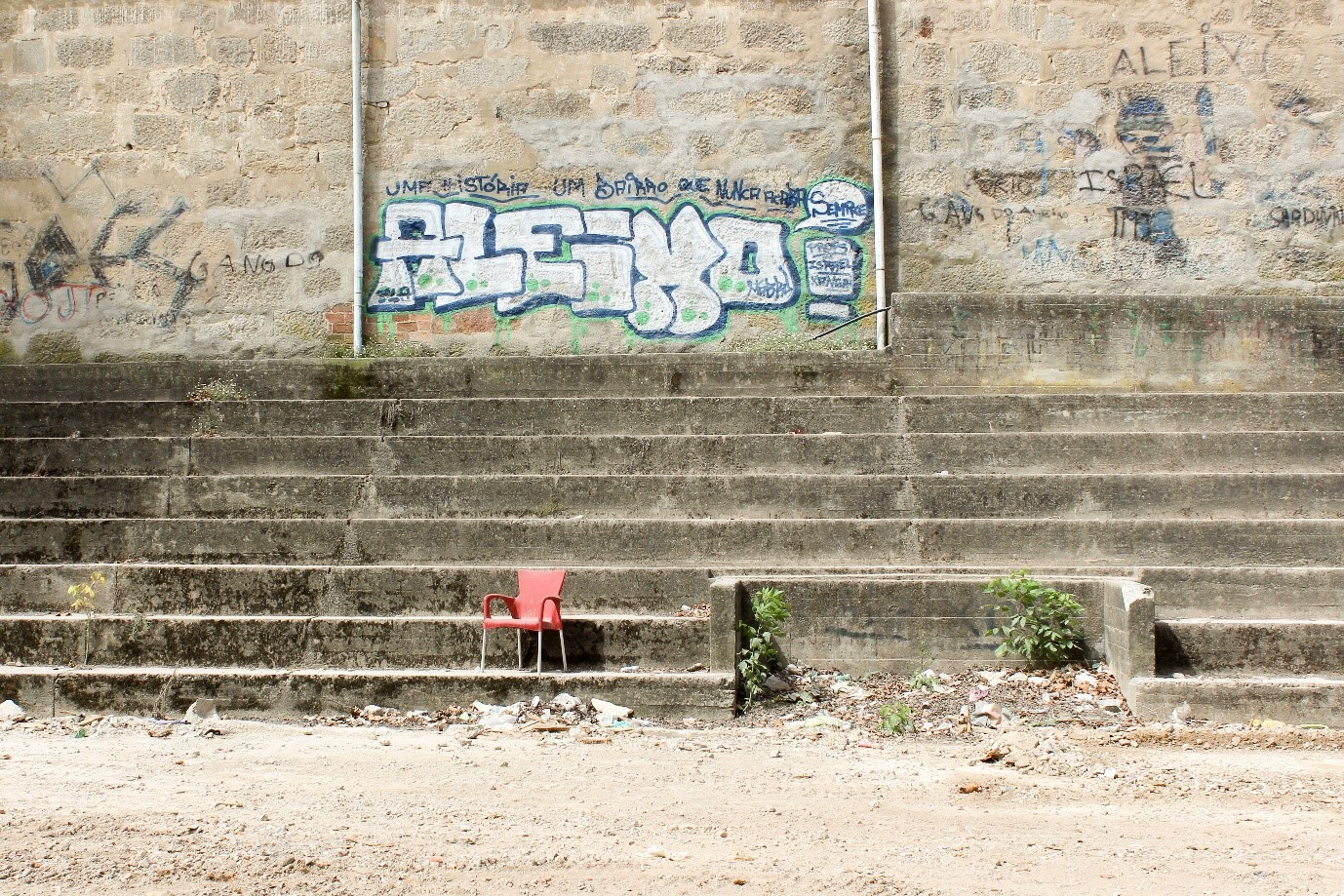
Flora Paim
Figure 5 The graffiti scrawled on a weathered wall in the neighbourhood reads: "Aleixo always/a history, a neighbourhood that never ends"
Has the image, then, acquired punctum, that sharp element whose mere presence "interrupts my reading" (Barthes, 1980/1984, p. 67) of the photographer's general framework of intentions9? At first glance, considering that the punctum is the detail that "wounds" the image, one might think that it is the stain that literally corrodes the lower part of the photograph. The stain brings to the surface of the image all the episodes of violence that have played a part in the constitution of the neighbourhood since its inception. It remains like a scar inflicted on the photograph by the demolition, the latter also being "a wound, not only in space, but also in the body of time" (Raqs Media Collective, 2011, para. 3). It also alludes to the persistent stigma that hurts the reputation of the place and its residents. Otherwise, one could also consider the punctum as the black abyss of the woman's eyes or the light sleeves of the dress emptied from her arms (in a Warburgian reading, would this be a pathosformel, an accidental emergence of the classical formula, of the Venus de Milo?). However, Barthes (1980/1984) also speaks of another type of punctum, which is not a detail and which seems to be what particularly "pricks me (but also bruises, is poignant to me)" (p. 46): "I now know that there exists another punctum (another ‘stigmatum’) than the ‘detail’. This new punctum, which is no longer of form but of intensity, is Time, the lacerating emphasis of the noeme (‘that-has-been’), its pure representation” (Barthes, 1980/1984, p. 141).
For Barthes, in some images, the noeme of the photograph (the "that-has-been") could also be added to the condition of a previous future of which we are already aware ("that-will-be"). By creating the possibility of the subject's posthumous existence through the image, photography makes us experience a cruel awareness of the flow of time and its inevitable effects. Susan Sontag (1977) states that "to take a photograph is to participate in another person's (or thing's) mortality, vulnerability, mutability" (p. 17). For her, all photographs are memento mori, reminders that all of us, our places and the objects that fill them, will eventually disappear. I look at this image and think: these towers no longer exist and will be destroyed; this woman has been evicted and will lose her home. As Barthes says (1980/1984), I suffer retrospectively "over a catastrophe which has already occurred" (p. 142). This realisation also hurts me because it relates to the impending demolition of my own house10.
4. Representations of the Public and the Private
A house demolition, the locus par excellence of private space, always takes place in public ( ... ). The interior, to which only close friends and family members have been invited, is exposed to the view of all and sundry, and the home’s most cherished objects fly up in the air and are shattered amid the ruins, abandoned to any hand. (Azoulay, 2013, p. 219)
The photograph at issue, captured inside a residence I have never visited and whose inhabitants I do not even know the identity of, ended up in my possession because a violent demolition operation disrupted the boundaries between the public and private spaces, laying bare the intimate domains of various individuals (Figure 6 and Figure 7). As I mentioned, alongside the picture, other fragments of personal objects were among the rubble. During the demolition, one or two pieces of furniture also fell from the top of the tower amid the masonry blocks, suggesting that some of the houses were still partially furnished. Why was this photograph left behind? Did the residents choose not to take some of their belongings, or did they lack the time and conditions to remove them before the demolition?
The processes of removal and relocation are intrinsically delicate and complex. Few things could be more traumatic than being dispossessed of your home against your will. In the case of Aleixo, perhaps because of all the stigma associated with the place, relocation proved prolonged and distressing, as documented by newspapers of the time11. Before the demolition, the neighbourhood was in a kind of limbo, waiting for the end, with the buildings nearly empty and more vulnerable to security risks. Neglect from municipal authorities left the remaining towers in disrepair. Malfunctioning elevators (whose operation over the years seems to have been intermittent) compounded the challenge of relocating people and their belongings12. It should be noted that this degradation was among the motives behind the demolition and that the failure to curb the rise in safety and health risks of the space only strengthened public support for the decision.
Analysing the Israeli authorities' mass demolitions of Palestinian housing in Gaza, Ariella Azoulay (2013) applies Hannah Arendt's concepts to define three forms of relationship between the public and private spheres. Particularly notable13 are the "the protective condition" and the "the condition of unprotected exposure to power" (Azoulay, 2013, pp. 203-208).The first, the protective condition, is based on a constraining relationship between the two domains where a private space, affirming and safeguarding differences, serves as a prerequisite for engaging in the public sphere, where differences are negotiated for coexistence. In contrast, the condition of unprotected exposure to power would be an inversion of the former, and it is possible to "identify and characterize it by observing the state of the dispossessed, internally displaced, and refugees against whom it is directed" (Azoulay, 2013, p. 205). As the author emphasises, the presence of these individuals in a political territory does not guarantee them admission to the public space, nor does it ensure their integration into the political structure. Azoulay (2013) highlights how, in the case of the Palestinians, it is precisely their non-recognition as citizens by the Israeli Government that authorises their violation and exposure within their private sphere, namely through the demolition of their homes. The shift between the two conditions establishes a circular pattern: where in one, having a private space secures an individual's access to the public sphere; in the other, the denial of admission to the public sphere deprives the right to own a private place before the State (which, in turn, would serve as the universal requirement for admission to the public sphere). According to Azoulay (2013):
there are those whose home gives them access to public space and is immune to demolition, and there are those whose own home does not give them a place in public space, and therefore their home loses its sanctity as a human dwelling and is designated for demolition or invasion. (p. 210)
Obviously, equating realities as disparate as these - the destruction and occupation of Palestinian territory by Israel and the destitutions caused by urban "rehabilitation" operations is not the intention14. However, Azoulay's (2013) framework can provide tools to delve deeper into the complexities of the demolition events discussed and to unveil the political stances they represent. When "the inhabited house does not pose a physical or symbolic obstacle in the way of rampantly violent governmental force" (Azoulay, 2013, p. 207) and residents are deprived of their private dimension, it becomes implicit that their legitimacy as active subjects in a public sphere where differences are negotiated is undermined. The public representations of this place are symptoms of this invalidation and the dehumanisation of its residents. A search for the entry "Bairro do Aleixo" in the Google Image archive, for example, mainly yields images related to the towers' demolition and reports on drug trafficking in the area. In the Porto Municipal Archive, on the other hand, the neighbourhood is seen from afar, appearing in the background of a photograph featuring a nearby chapel and in the corner of a panoramic shot of the city (Figure 8). The other results consist of architectural and engineering drawings of the towers and their complementary facilities. Apparently unworthy of being recorded in the city's official public archive, the neighbourhood is only depicted as an external and distant image or an abstract construction shot not yet defiled by the arrival of the residents.
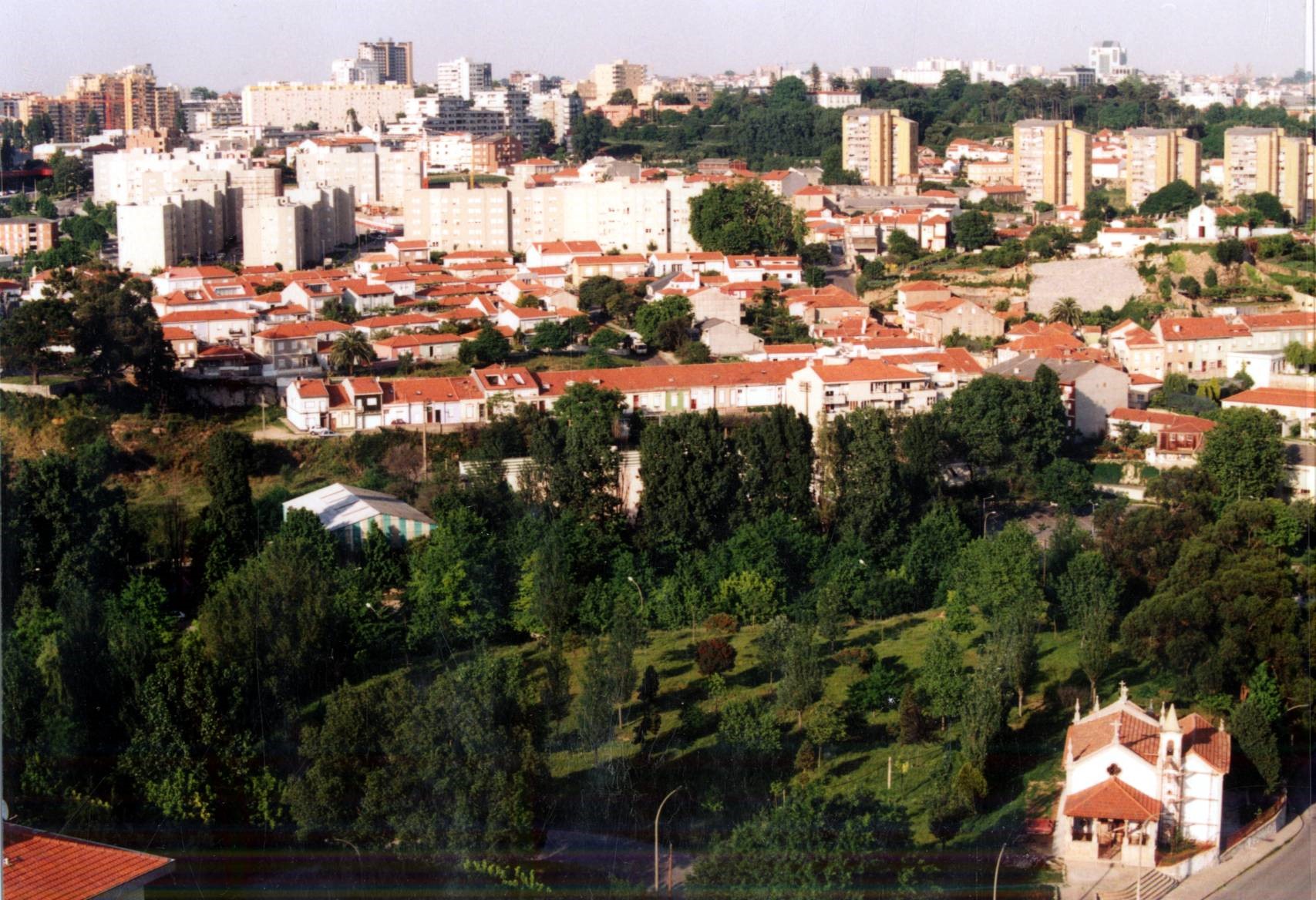
Câmara Municipal do Porto. Arquivo Histórico. Identifier 255899
Figure 8 Panoramic view of Campo Alegre, captured from a tower in Pasteleira. The towers of the Bairro do Aleixo are visible at a distance, in the upper right-hand corner, 2000
In the text mentioned above, Azoulay (2013) also highlights how the domestic demolition arenas, maintained in public view by Israel's authorities as displays of power, became one of the few places where Palestinians were not forbidden to gather collectively. Among the rubble, residents share complicit glances and impressions about the event and the pervasive violence across the city. They transform the location of a former dwelling into a sort of public square, revealing that established power "will never be able to completely destroy public space and deny them their common existence" (Azoulay, 2013, p. 221)15. Similarly, anthropologist Gaston Gordillo (2014) states that:
rubble is potentially disruptive of existing places and relations because it often turns what used to be private or state property into a de facto part of the commons. Rubble is matter that belongs to no one and to everyone16 and that radiates around it a collective spatiality. (p. 265)
Gordillo's (2014) observation is illustrated both by the circumstances of my encounter with the photograph and by the records of Tower 4's implosion (Figure 9). These attest to the invasion of the newly produced rubble by a group of people, mostly residents, as a form of protest against the destruction (Lusa, 2013).
As mentioned, the photograph at issue was a private image, probably part of a family album (as inferred from the remnants of glue and paper on the back of the image - Figure 2). It was discarded like rubble in the public space during the demolition, essentially placed in evidence (in plain sight). But could this image be repurposed as evidence (proof and sign of reality)? Could it stand as a testament to the vanished existence of the obliterated place and the forceful practice of removal/demolition carried out by the State? Additionally, might this photograph, probably captured by a former resident inside his house, be a counter-image17 to the dominant discourse on the neighbourhood? Could it provide a more dignified and subjective representation of the place, countering the superficial and harsh public stigma associated with it?
5. The Rubble-Image
The archival image is merely an object in my hands, an indecipherable and insignificant photographic print ing as long as I do not establish the relationship - imaginative and speculative - between what I see here and what I know from other sources. (Didi-Huberman, 2004/2012, p. 146)
In this text, I tried to understand how reading a fragment sourced from the demolition of the old Bairro do Aleixo, a photograph uncovered among the rubble, could be a starting point for rethinking "what space is, how it is produced, how it is destroyed and what is created by this destruction" (Gordillo, 2014, p. 2). The photograph at issue is an object that encapsulates a series of intertwined processes and tensions shaping the essence of a place, considering it as "woven together out of ongoing stories" formed by an "ever-shifting constellation of trajectories" (Massey, 2005/2008, pp. 191, 215). Despite Aleixo's supposed erasure, it lingers through remnants and memories but also as a haunting ghost in the collective memory of the city. In conclusion, I would like to venture to define the concept of the "rubble-image" as a conceptual lens for interpreting this image and, more broadly, similar traces resulting from erasure processes.
The image becomes rubble when it is re-produced by an event of destruction that transforms its previously private nature into a potentially public one. By being thrown into the open and public space, the rubble-image cries out for a sense of collective responsibility for the act of destruction, particularly from those represented by the forces executing it (in this case, the State). Faded as an image and nearly lost as an object, its survival is a matter of chance. Virtually all rubble-images perish before they are known. The rubble-image is a category of ruin embodying faint traces of what is absent and bearing imprints of destruction and the effects of time. And just like the ruin, its materiality is incomplete and fragile, even if it is stubborn.
The rubble-image is delicate, but it can be disquieting. It signals the return of the dead and reminds us that his death was not due to natural causes. The rubble-image surfaces what has been suppressed from the public domain, summoning collective ghosts and unresolved issues. It evokes an unsettled reconciliation.
The rubble-image resists the symbolic destruction of what it represents by subtly reintegrating into its initial context. It challenges the nullity of the void left by the destruction by hinting at tensions and memories associated with the space. The rubble-image confirms that what has been erased did, in fact, exist, and it does so by representing an utterly ordinary and trivial instant. Through its apparent banality, it opposes the existing representations in the official archives, offering an alternative lens for re-imagining the place and its associated narratives.
Acknowledgements
This article is part of the author's doctoral research project, funded by national funds through the Fundação para a Ciência e a Tecnologia, I.P. (reference 2021.05836.BD).
REFERENCES
Azoulay, A. (2013). When a demolished house becomes a public square. In A. L. Stoler (Ed.), Imperial debris (pp. 194-224). Duke University Press. https://doi.org/10.1215/9780822395850-007 [ Links ]
Barthes, R. (1984). A câmara clara: Nota sobre a fotografia (J. Castañon Guimarães, Trad.). Editora Nova Fronteira. (Trabalho original publicado em 1980) [ Links ]
Bondi, L. (1992). Gender symbols and urban landscapes. Progress in Human Geography, 16(2), 157-170. https://doi.org/10.1177/030913259201600201 [ Links ]
Câmara Municipal do Porto. (1969). Grupo de moradias populares do Aleixo-Memória descritiva. Arquivo da Câmara Municipal do Porto. [ Links ]
Didi-Huberman, G. (2012). Imagens apesar de tudo (V. Brito & J. P. Cachopo, Trads.). KKYM. (Trabalho original publicado em 2004) [ Links ]
Didi-Huberman, G. (2017). Cascas (A. Telles, Trad.). Editora 34. (Trabalho original publicado em 2011) [ Links ]
Fernandes, L. (1997). Actores e territórios psicotrópicos: Etnografia das drogas numa periferia urbana [Tese de doutoramento, Universidade do Porto]. Repositório Aberto. https://repositorio-aberto.up.pt/handle/10216/18145 [ Links ]
Gordillo, G. R. (2014). Rubble: The afterlife of destruction. Duke University Press. https://doi.org/10.1215/9780822376903 [ Links ]
Hayden, D. (1977). Skyscraper seduction, skyscraper rape. Heresies, (1). https://www.readingdesign.org/skyscaper-seduction [ Links ]
JMM. (2019, 21 de novembro). Torres do Bairro do Aleixo [Vídeo]. Facebook. https://m.facebook.com/jmmdemolicoes/videos/2504298846292562/?refsrc=deprecated&_rdr [ Links ]
Kern, L. (2020). Feminist city. Verso. [ Links ]
Lefebvre, H. (1991). The production of space. Blackwell Publishing. [ Links ]
Lima, A. (2012). Aleixo: O início do fim. Revista Punkto. https://www.revistapunkto.com/2011/12/aleixo-o-inicio-do-fim-ana-lima.html [ Links ]
Lusa. (2013, 12 de abril). Dezenas de pessoas invadem zona dos escombros do Bairro do Aleixo. Notícias Ao Minuto. https://www.noticiasaominuto.com/pais/62301/dezenas-de-pessoas-invadem-zona-dos-escombros-do-bairro-do-aleixo [ Links ]
Massey, D. (2008). Pelo espaço: Uma nova política da espacialidade (H. Pareto Maniel & R. Haesbaert, Trads.). Bertrand Brasil. (Trabalho original publicado em 2005) [ Links ]
Medeiros, M. (2010). Fotografia e verdade: Uma história de fantasmas. Assírio & Alvim. [ Links ]
Pestana, M., & Moreira, P. (2014). Aleixo sempre. Jornal Arquitectos. http://arquivo2.jornalarquitectos.pt/aleixo-sempre/ [ Links ]
Pinto, M. (2019a, 4 de maio). Esvaziaram o Aleixo. E o Porto vai ficar melhor por isso? Público. https://www.publico.pt/2019/05/04/local/reportagem/esvaziaram-aleixo-porto-vai-ficar-melhor-1871395 [ Links ]
Pinto, M. (2019b, 11 de maio). Quando o Aleixo conta outra história do Porto. Público . https://www.publico.pt/2019/05/11/local/reportagem/aleixo-contahistoria-porto-1872158 [ Links ]
Queirós, J. (2019). Aleixo: Gênese, (des)estruturação e desaparecimento de um bairro no Porto [1969 - 2019]. Edições Afrontamento. [ Links ]
Raqs Media Collective. (2011). Demolition. Atlas of Transformation. http://monumenttotransformation.org/atlas-of-transformation/html/d/demolition/demolition-raqs-media-collective.html [ Links ]
Sontag, S. (1977). On photography. Farrar, Straus and Giroux. [ Links ]
Távora, F. (2019). Estudo de renovação urbana do Barredo. Câmara Municipal do Porto. [ Links ]
TVI. (2011, 16 de dezembro). Demolição da torre 5 do Bairro do Aleixo [Vídeo]. YouTube. https://www.youtube.com/watch?app=desktop&v=20glilRUmSM [ Links ]
1Távora's pilot project for Barredo never materialised, yet it significantly influenced the directives of the Commissariat for Urban Renewal of the Ribeira-Barredo area. This entity was established after the April 1974 revolution specifically to spearhead urban renewal operations in Porto's historic centre. The study was recently published in a book that I recommend for a more in-depth exploration of this process: Távora (2019).
2The project for the Aleixo Affordable Housing Group was signed by architect Manuel Teles in 1969. However, following the construction and observing the deviations from the original proposal and the evolving public perception of the neighbourhood, the architect reportedly distanced himself from the project's authorship, eventually aligning with the stance advocating for its demolition (Pestana & Moreira, 2014; Queirós, 2019).
3Compared to preceding public housing complexes, Aleixo stood out for its high-rise structure but also for its programmatic innovations and quantitative and qualitative spatial improvements. It showcased improved access and communal spaces, increased floor area and internal layout of dwellings, upgraded hydraulic and sanitary systems, and the use of higher-quality materials (Queirós, 2019).
4According to researcher Luís Fernandes, "deindustrialisation led to neighbourhoods in general - with Aleixo as a prime example - slipping into a state of economic distress. A significant portion of the population was employed in existing factories ( ... ). However, the closure of these industries and the port's automation resulted in mass layoffs and a surge in unemployment. By the mid-1990s, Aleixo's unemployment rate reached 30%, whereas the country's average stood at less than 6%. This economic strain pushed individuals grappling with financial hardship to resort to precarious roles within underground economies, such as the drug market" (Pestana & Moreira, 2014, para. 7). Furthermore, the researcher posits that the neighbourhood's disintegration within the urban fabric facilitated the emergence of this kind of economy: "it's a place that's difficult to control, almost like a fortress. Being a fracture within the urban envelope, it becomes effortless to detect the arrival of outsiders, which is advantageous when conducting clandestine business" (Pestana & Moreira, 2014, para. 7).
5 Fernandes (1997) underscores the perpetuation of a place being labelled "dangerous" through a process of "cognitive reduction", primarily steered by the media. This process condenses deviant places and activities into derogatory stereotypes - and "experiential avoidance" (p. 305) - which reinforces these stereotypes in collective imagination by implicitly or explicitly suggesting that frequenting such places is ill-advised. This observation corroborates the prevailing notion that entering Aleixo as an outsider was nearly impossible. The "avoidance" is further upheld by the urban layout of neighbourhoods, functioning as enclaves that can be circumvented in the daily urban experience by those who do not reside there.
6News coverage at the time reported that Rui Rio, then mayor of Porto, watched the demolition of Tower 5 on board a tourist boat anchored in the Douro, with guests and journalists in attendance. Queirós (2019) astutely highlights that Rio timed the demolition to coincide with the 10th anniversary of his initial election triumph (December 16, 2001). In a cold marketing manoeuvre for his electorate, the former mayor turned the destruction of the public housing complex into an occasion for political celebration. The video footage capturing the implosions of Towers 4 and 5 garnered widespread publicity on YouTube (TVI, 2011).
7The video footage, featuring time-lapse sequences and aerial drone perspectives, is shared across the social media platforms of the demolition company responsible, adorned with the optimistic slogan: "we create new beginnings for a better future!" (JMM, 2019).
8The reference to the simulation of death through photography is commonly connected to the technique's evolution in the 19th century. During this period, subjects had to remain still for extended durations to enable adequate light exposure for image development. It also alludes to post-mortem photography, a facet of professional photography prevalent during that era. For further insights, refer to Medeiros (2010).
9 Barthes (1980/1984) defines the studium as a broad field within the image that can be interpreted by the spectator (the person looking at the image) according to their knowledge and culture, which allows them to find the intentions of the operator (the photographer). The studium awakens a general interest, an average affection in the spectator which may or may not be disturbed by the punctum, that which disrupts and contradicts the studium.
10The building where I currently live falls within the trajectory of the expansion project for a Lisbon Metro line. It's set to be demolished in 2024, along with approximately 20 neighbouring residential or mixed-use buildings. Some of the observations made about the specifics of urban demolition operations are inevitably connected to my firsthand experience over the past two years.
11For example, Pinto (2019a, 2019b).
12As in the case of Eduarda Lopes, whose story was recounted in an article in Público in 2019, the resident threw her belongings out of her 11th-floor window before the demolition of Tower 3 (Pinto, 2019a).
13The other would be a basic relationship, considered empty and necessary by the author, which recognises and claims the real existence of some distinction between these two domains despite recent debates that highlight the overlaps between the two (Azoulay, 2013).
14Even though we can note similarities between the operations of spatial destruction underlying urban restructuring processes and the imagery of dominance and territorial conquest seen in war contexts.
15It should be noted that this text was written and submitted for publication before the outbreak of this phase of the conflict in Gaza in October 2023.
16In the case of the photograph in question (the image of a person), I believe that the notion of "collective belonging" highlighted by Gordillo (2014) does not occur. Despite being in my possession, that image does not belong to me or everyone. Rescuing it from the demolition rubble was a quick gesture intended to spare it from the fate of the other rubble (either permanently destroyed or recycled in the case of building materials). Faced with the State violence of the demolition, I chose to remove it from the context, seeing it as a testament to the place's life and its destruction, aiming to preserve the possibility of restoring it to its origin. Attempts to find its owner, the woman in the photograph, and return it to her are ongoing.
17Counter-images to the dominant narrative on Aleixo have been produced mainly through cinema, in documentaries such as Russa (João Salaviza and Ricardo Alves Jr., 2018, 20 minutes) and Nossa Terra, Nosso Altar (Our Land, Our Altar; André Guiomar, 2020, 77 minutes). Particularly in the latter, one might argue, drawing from Azoulay's (2013) framework, that the images seek to uphold the respect for the sanctity of the residents' private spaces during their existence, thereby seeking to restore their agency as subjects in the public sphere.
Received: September 07, 2023; Revised: December 09, 2023; Accepted: December 11, 2023











 text in
text in 


